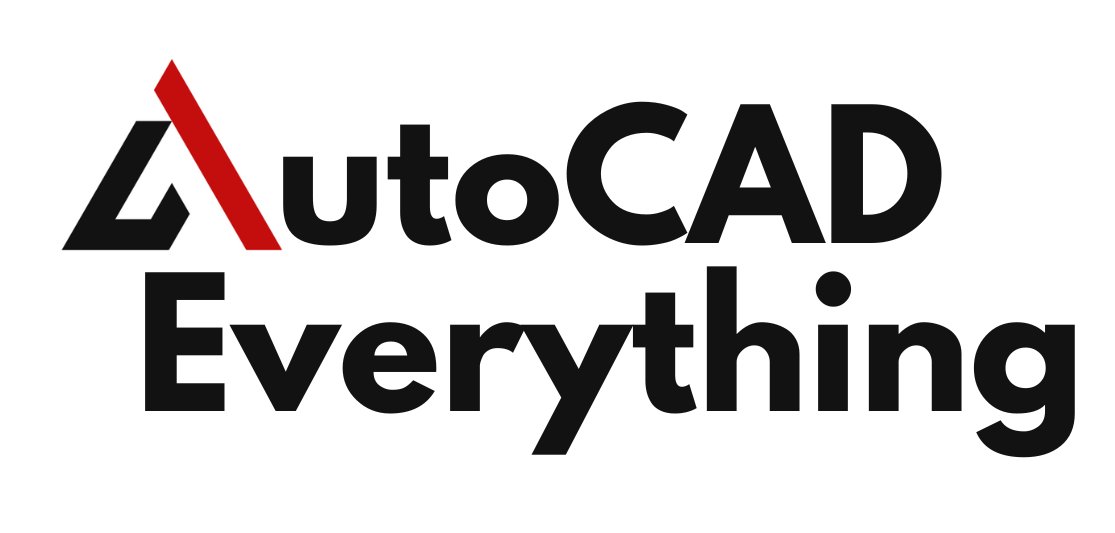Introduction
In complex projects that involve multiple drawings and design elements, managing data becomes an essential part of ensuring accuracy, efficiency, and clear communication. AutoCAD offers powerful data extraction and reporting tools that allow you to pull valuable information from your drawings and generate detailed reports. Whether you need to track quantities, dimensions, block attributes, or materials, data extraction helps streamline project management and ensures all necessary information is available in an organized format. This article provides a comprehensive guide on how to use AutoCAD’s data extraction feature to extract data and create reports that enhance your project management process.
Table of Contents
What is AutoCAD Data Extraction?
AutoCAD Data Extraction is a feature that allows users to pull information from their drawings into a structured table or external file, such as an Excel spreadsheet. You can extract a wide range of data, including:
- Block attributes: Information embedded in blocks, such as part numbers, descriptions, and sizes.
- Drawing properties: Metadata like layer names, object types, dimensions, and quantities.
- Geometric properties: Lengths, areas, volumes, and other measurements from your drawing entities.
Data extraction is highly useful for creating bills of materials (BOMs), quantity take-offs, and generating reports that summarize project details for contractors, clients, or stakeholders.
Why Use Data Extraction in AutoCAD?
Data extraction plays a crucial role in managing large and complex projects by providing several benefits:
- Automated Data Collection: Instead of manually counting objects or measuring areas, you can extract data directly from the drawing, saving time and reducing errors.
- Project Tracking and Reporting: Data extraction allows you to generate detailed reports, making it easier to track quantities of materials, analyze costs, and manage resources.
- Dynamic Updates: Extracted data can be linked back to the drawing, ensuring that if the design changes, the data in your report updates automatically.
- Improved Collaboration: Extracted data can be exported and shared with other project stakeholders, ensuring that everyone has access to the same information for decision-making.
How to Perform Data Extraction in AutoCAD
Let’s walk through the step-by-step process of performing data extraction in AutoCAD and generating a report.
Step 1: Preparing Your Drawing for Data Extraction
Before extracting data, it’s important to ensure that your drawing is organized and contains the necessary information.
- Use Blocks with Attributes: Make sure the objects in your drawing, such as doors, windows, or furniture, are defined as blocks with attributes. Attributes are custom fields (e.g., part numbers, sizes, descriptions) that can be extracted during the data extraction process.
- Organize Layers: Organize your drawing using layers for different components (e.g., walls, electrical fixtures, furniture). This helps in filtering and categorizing data during extraction.
- Verify Object Properties: Check that the objects you want to extract data from have accurate properties (e.g., lengths, areas, volumes, material types). This will ensure accurate reporting later.
Step 2: Launch the Data Extraction Wizard
AutoCAD’s Data Extraction Wizard is a user-friendly tool that guides you through the process of extracting data from your drawing. Here’s how to launch it:
- Open the Data Extraction Wizard: Type
DATAEXTRACTIONin the Command Line and press Enter. This will launch the Data Extraction Wizard. - Create a New Data Extraction: In the first window of the Data Extraction Wizard, choose Create a new data extraction. You will be prompted to save a
.dxefile, which stores the data extraction settings. Name the file and save it in your project folder.
Step 3: Selecting Objects for Data Extraction
In this step, you’ll choose which objects or types of data you want to extract.
- Select the Source Drawing: The wizard will ask you to select the drawing or drawings from which to extract data. You can choose your current drawing or include external files like Xrefs (external references).
- Choose Objects: Select specific objects for data extraction. You can filter the selection by object type (e.g., blocks, lines, polylines) or by layer, depending on your needs. For instance, if you are generating a furniture schedule, you might filter the selection to only include blocks related to furniture.
- Use Filters: You can apply additional filters to narrow down the selection of objects by properties like color, layer, line type, or object type. This ensures that you extract data only from relevant parts of your drawing.
Step 4: Selecting Data Categories and Properties
In this step, you’ll specify what data to extract from the selected objects.
- Choose Data Categories: The wizard will display categories such as Geometry, General, and Attributes. These categories include properties like length, area, volume, layer, and block attributes. Select the relevant categories based on what data you need in your report.
- Selecting Specific Properties: Within each category, select specific properties to extract. For example:
- For blocks, you might extract block name, description, and part number.
- For lines or polylines, you can extract length or layer.
- For hatch objects, you might extract area or material.
- Sort and Organize the Data: You can also sort and organize the data by specific attributes or properties, helping you group similar items together in the final report.
Step 5: Refining the Data
Once you’ve selected the data to extract, AutoCAD allows you to further refine and format the output.
- Preview Data: The wizard provides a preview of the data table, allowing you to review the selected objects and their properties. You can adjust the columns, sort data, and apply filters as needed.
- Combine Duplicate Rows: If you have multiple instances of the same block or object (such as multiple chairs in a room), AutoCAD can combine duplicate rows to simplify your report. This is especially useful for generating quantity take-offs.
- Apply Summation: You can apply summation or counting to certain fields. For example, AutoCAD can calculate the total area of all hatches or count the total number of windows in your drawing.
Step 6: Output the Data
In this step, you’ll decide how to output the extracted data.
- Insert Data into the Drawing: You can insert the extracted data directly into your drawing as a table. This is useful for on-sheet schedules, such as equipment lists or bills of materials. The table can be updated automatically if the drawing changes.
- Export Data to an External File: Alternatively, you can export the data to an external file such as an Excel spreadsheet (.xlsx), CSV, or TXT file. This option is useful if you need to generate reports for external use or further process the data.
- Link Data: AutoCAD allows you to link the extracted data to the drawing, meaning that any changes made in the drawing will automatically update the data table or report.
Practical Applications of AutoCAD Data Extraction
Data extraction in AutoCAD is highly versatile and can be used in various industries for different purposes. Below are some practical applications:
1. Bill of Materials (BOM)
For manufacturing or construction projects, you can extract block attributes such as part numbers, descriptions, and quantities to generate a Bill of Materials (BOM). This BOM can be linked to the drawing for real-time updates as the design evolves.
2. Quantity Take-offs
In architectural and engineering projects, data extraction can be used to calculate the quantities of materials like doors, windows, flooring, or wall finishes. This is especially useful for cost estimation and resource planning.
3. Project Schedules
Data extraction can be used to generate equipment, furniture, or fixture schedules for architectural projects. For example, a lighting schedule can include the location, type, and quantity of light fixtures used in the design.
4. Area and Volume Calculations
For space planning or civil engineering projects, you can extract areas and volumes from hatch objects or solid models, providing essential data for zoning, landscaping, or excavation work.
5. Asset Management
Data extraction can also be used to track and manage assets within a facility. By assigning unique attributes to objects in the drawing (such as equipment serial numbers, maintenance dates, or locations), you can generate detailed reports for facility management purposes.
Best Practices for Data Extraction in AutoCAD
To make the most of AutoCAD’s data extraction and reporting tools, follow these best practices:
- Organize Your Drawing: Ensure that your drawing is well-organized, with objects placed on appropriate layers and attributes clearly defined. This makes it easier to filter and extract data.
- Use Consistent Naming Conventions: Apply consistent block and attribute naming conventions to ensure that data extraction results are accurate and easy to interpret.
- Link Data for Dynamic Updates: When possible, link extracted data tables to the drawing so that changes in the design are automatically reflected in the report.
- Review Data Before Exporting: Always review and clean up your data in the preview window before finalizing the extraction. This helps avoid errors and ensures the data is properly formatted.
Conclusion
AutoCAD’s Data Extraction feature is a powerful tool that helps streamline project management by automating the collection of valuable data from drawings. Whether you’re generating a bill of materials, calculating quantities, or creating equipment schedules, data extraction enables you to extract and organize the information you need for efficient reporting. By following the steps outlined in this guide, you can take full advantage of AutoCAD’s data extraction capabilities to enhance your workflow and ensure accuracy in your projects.
FAQs
- What types of data can be extracted from AutoCAD drawings?
You can extract data such as block attributes, object properties (e.g., length, area, volume), layer names, and metadata like drawing file information. - How do I export data from AutoCAD to Excel?
After using the Data Extraction Wizard, you can choose to export the extracted data as an Excel (.xlsx) file. This option is available in the final step of the data extraction process. - Can AutoCAD data extraction automatically update?
Yes, by linking the extracted data to the drawing, any changes made in the drawing will automatically update the associated data table or external report. - What is the difference between a block attribute and object property?
A block attribute is custom data (e.g., part numbers, sizes) embedded within a block, while an object property refers to characteristics such as length, area, or volume of an AutoCAD object like a line or polyline. - How can I combine similar objects in a data extraction?
You can use the Combine Duplicate Rows feature in the Data Extraction Wizard to group and summarize similar objects, such as combining all instances of a specific block and calculating the total quantity.

